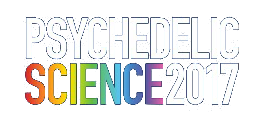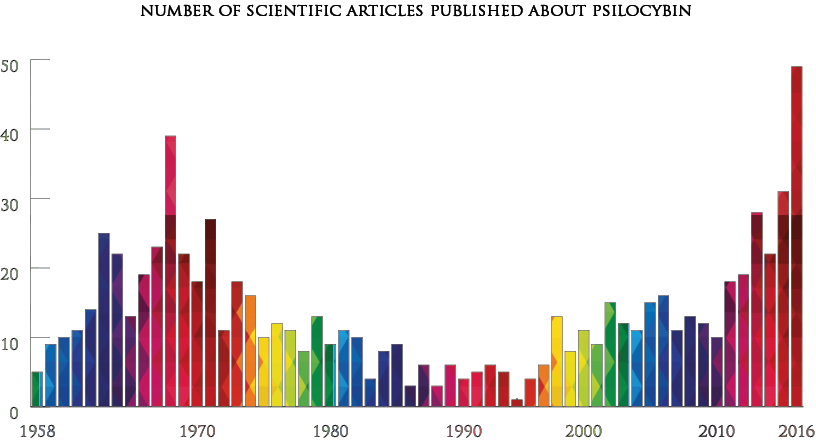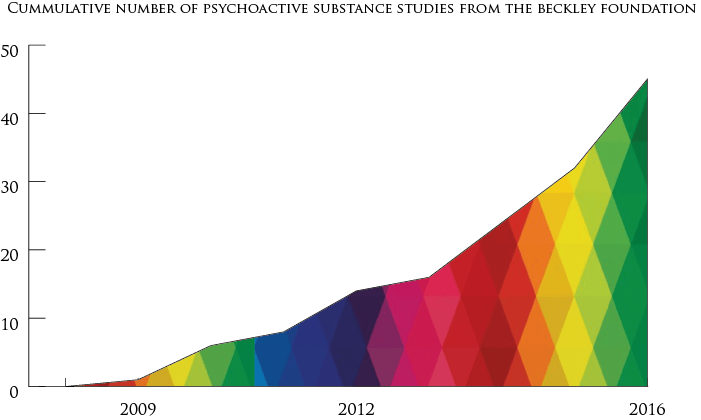Psychedelic Research Timeline
After a long winter, spring has come for psychedelic research. In 1943, Albert Hoffman was only just discovering the psychoactive properties of LSD and it would be another ten years before R. Gordon Wasson set off to gather strains of psilocybin in the mountains of Mexico. It was the 1950s, 60s, and 70s that were to be the most fruitful decades of the 20th century for psychedelic research. Thousands of LSD studies were carried out, as researchers looked into its potential as a tool for psychotherapy and its effects on everything from metabolism, to time perception, to its potency as a tool for combatting addiction. As the sun set on the 60s, the US government ramped up its war on drugs and in 1970 President Nixon introduced the Controlled Substances Act, rendering psilocybin, mescaline, LSD and DMT illegal. The act effectively ended all government-sanctioned psychedelic research, and what was a flood diminished to a trickle, which was how it would stay for the following three decades.
This figure includes clinical trials in humans, behavioural studies in animals, commentaries and review articles about psilocybin research. The results are drawn from a Pubmed keyword search for psilocybin.
While large-scale controlled studies weren’t an option, not all psychotherapists stopped their work with psychedelics, and research like Rick Strassman’s work with DMT were notable exceptions to the ban. Through the ceaseless efforts of advocates and scientists, the new millennium brought with it a new lease of life for psychedelic research. In the early 2000s psilocybin studies began again in earnest – from which ever more impressive studies were to follow – and these were soon joined by groundbreaking studies with LSD. Meanwhile, advances in brain imaging technology have turned psychedelics into an indispensable tool for neuroscience. Research with psychoactive substances has only increased as the decade goes on and groundbreaking results have come from studies using cannabis, ketamine, ibogaine, ayahuasca, psilocybin and LSD. A look at the number of scientific publications on psilocybin and LSD over the past nine decades gives an exciting indication of the direction that psychedelic research is heading in.
The increase in the number of studies carried out by the Beckley Foundation over the past decade signals the gathering of momentum in the field of psychedelic research. In an attempt to better understand brain function and to explore the therapeutic potential of these substances, the Beckley Foundation has conducted studies with cannabis, psilocybin, LSD, MDMA, and ayahuasca.
MAPS is a pioneer of research into the psychotherapeutic potential of MDMA and has equally made great strides forward in the past decade. Most recently, MAPS secured FDA approval for large-scale Phase 3 clinical trials investigating the potential of MDMA as a treatment for post-traumatic stress disorder (PTSD). MAPS is also advancing research into ayahuasca as a treatment for addiction and into the effect of cannabis on symptoms of PTSD.
Psychedelic Science 2017 comes at a time when we have good cause to celebrate what has been achieved and good reason to look forward to what lies ahead. As a global community of dedicated researchers continues to further our understanding of psychedelics and the discussion around their therapeutic potential enters the mainstream, it truly is an exciting time for psychedelic science.
Podcast
- All
Links
- All
Support
- All
BIPRP
- All
Science Talk
- All
Amanda's Talks
- All
- Video Talk
- Featured
- 2016 Onwards
- 2011-2015
- 2010 and Earlier
- Science Talk
- Policy Talk
One-pager
- All
Music
- All
Amanda Feilding
- All
Events
- All
Highlights
- All
Psilocybin for Depression
- All
Current
- All
Category
- All
- Science
- Policy
- Culture
Substance/Method
- All
- Opiates
- Novel Psychoactive Substances
- Meditation
- Trepanation
- LSD
- Psilocybin
- Cannabis/cannabinoids
- Ayahuasca/DMT
- Coca/Cocaine
- MDMA
Collaboration
- All
- Beckley/Brazil Research Programme
- Beckley/Maastricht Research Programme
- Exeter University
- ICEERS
- Beckley/Sant Pau Research Programme
- University College London
- New York University
- Cardiff University
- Madrid Computense University
- Ethnobotanicals Research Programme
- Freiburg University
- Medical Office for Psychiatry and Psychotherapy, Solothurn
- Beckley/Sechenov Institute Research programme
- Hannover Medical School
- Beckley/Imperial Research Programme
- King's College London
- Johns Hopkins University
Clinical Application
- All
- Depression
- Addictions
- Anxiety
- Psychosis
- PTSD
- Cancer
- Cluster Headaches
Policy Focus
- All
- Policy Reports
- Advisory Work
- Seminar Series
- Advocacy/Campaigns
Type of publication
- All
- Original research
- Report
- Review
- Opinion/Correspondence
- Book
- Book chapter
- Conference abstract
- Petition/campaign
Search type



